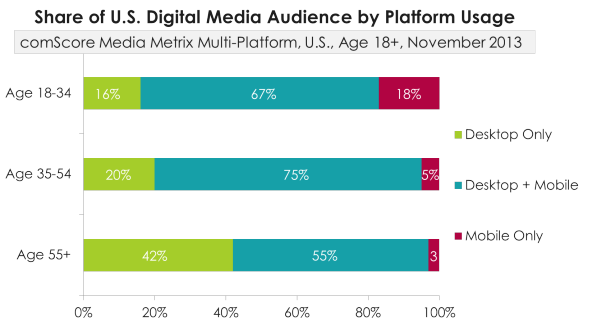EXECUTIVE SUMMARY
What do you think of when you think of the millennial generation? For many marketers, the first image that comes to mind of this 1980-2000-born cohort is still one of a disaffected undergrad with a helicopter parent and an oversized sense of entitlement — not a terribly important audience for a healthcare marketer.
As recently as two years ago, Forbes and the New York Times were still writing headlines like, “Are Millennials ‘Deluded Narcissists’?” and
“For Millennials, a Generational Divide.” Articles like this took for granted two things: They presupposed a negative image of millennials and assumed that millennials weren’t their main readership — that they were still an “other.”
As such, many marketers, including healthcare marketers, still pronounce “millennials” in a tone somewhere between patronizing and condescending. But there’s danger in discounting the potential and intellect of this enormous cohort.
Let’s discuss more about who they are, what they want and how to reach them, using up-to-date research from leading sources to dispel these outdated impressions. And let’s begin by considering the following:
- The millennial generation is the largest in history (even bigger than the baby boomers), comprising 29 percent of the current U.S. population (source).
- They hold $1.3 trillion in annual buying power (source).
- Given that they were born between 1980 and 2000, the average millennial is 25 years old (source).
- Millennials are the young-adult cohort most likely to have health insurance in the last two decades — a trait shown to improve their health outcomes and financial security and make them more likely to report being in excellent health (source).
- Today, 90 percent of first-time moms are millennials (source) and 80 percent of all new births are to millennials (source). And moms hold 85 percent of purchasing power (source).

If you think this sounds like a group marketers shouldn’t ignore, you’re right. Millennial consumers are adults — thoughtful consumers, engaged customers, health-conscious like perhaps no generation before, and increasingly, parents who are making decisions and purchases that affect their entire family.
Jessica Alba’s Honest Company is a great example of a millennial creating healthcare products that appeal to like-minded individuals. She’s created a billion-dollar brand that recently got the spotlight in Forbes (source).
HOW TO REACH MILLENNIAL PARENTS
Millennials are known for a skeptical approach toward consumerism in general and toward healthcare in particular, being far less likely to visit a doctor than other generations (source).
Mashable, writing about a recent Goldman Sachs report (source), noted that millennials look for four things in making brand decisions: (source)
- Authenticity (43 percent rank this over content)
- Meaningfulness
- Uniqueness
- Innovation
If we take those as the four facets that define the “what” of a communication, what’s the “how”? Here are our four answers:
OFFER ACCESS AND EXPERIENCE, NOT OWNERSHIP AND PURCHASE
Millennials want to “create, share and capture memories” (source), not simply collect items on a shelf, and they value brands that provide this to them. Whether you call it the “experience economy” or the “sharing economy,” they are interested in using their money on spending time with others, not on “stuff.”
It may be blowback from the economic crash of 2008 or from the ideals they saw their parents embrace for in the 1980s when “stressed” was a term of honor. Either way, work/life balance tops millennials’ job priorities (source). And, intrigued by health-supporting services, they’re the largest users of health apps (source).
Unfortunately, this doesn’t mean that they’re the healthiest generation yet. In many ways — from obesity to mental health — they’re worse off than anyone (source), and 69 percent say their health worries them (source). But this dichotomy is exactly where healthcare can help most.
They see value in what they can share about a brand, as well as what a brand can help them do (source). Millennials want to know about health — everything from meditation to mindfulness, clean eating to local sourcing, proper medication doseage to choosing the right healthcare professional or health plan. But they want to know how all this can fit into lives full of careers and kids. Health is tricky. The question, then, is how can healthcare marketers offer, not just a product or a service, but balance and time?
UNDERSTAND THAT MOBILE AND SOCIAL ARE NOW MARKETING TABLE STAKES
- Some 85 percent of millennials own a smartphone (versus only about 71 percent of the general population) (source), and an increasing number of millennials — 20 percent in recent studies — only access the Internet that way (source).
- 62 percent of millennials are more likely to become a loyal customer when a brand engages with them on social networks (source), but more than half are annoyed when they don’t get a rapid answer from a brand on social media (source).
- Moms spend more than six hours a day on their smartphones (source).
As Mike Kondratick of Capstrat put it, “For providers that want to connect with millennial moms, this means content must operate at the intersection of social and mobile” (source).
“For providers that want to connect with millennial moms, this means content must operate at the intersection of social and mobile.”
— Mike Kondratick
“Social media marketing” and “mobile marketing” were once common phrases, but their use implied that they weren’t the heart of marketing, that they were add-ons. In trying to reach millennial parents today, though, you could be excused for wondering if anything else even mattered.

APPROACH THE INDIVIDUAL, NOT THE GROUP
Millennial parents do more research into their purchases than any other generation has. More than half reported doing this online regularly (source). It’s only fair that they expect the brands they pay for to do at least as much research in return.
A 2012 New York Times article on consumer habit analysis (source) famously demonstrated the unnerving capabilities of over-applied research, though, with the example of a father learning of his daughter’s pregnancy thanks to Target’s direct mail.
The inverse, however, is that marketing analytics, applied unobtrusively, can be phenomenally valuable for reaching a customer in a way most likely to be appreciated and turned into action.
This increasing ability for hyper-personalized outreach is important because millennial parents are not only immune, but annoyed by, typecast or broadcast messages. Teasing clueless dads or pitting moms against each other is as outdated as any other 20th-century stereotype, as both Huggies (source) and Motrin (source) learned in recent years.
It’s additionally important to remember that the diversity of millennials is demographic as well as psychographic. In this generation, 43 percent are non-white and a quarter speak a language other than English at home (source).
Big data allows for narrowcasting to the point of individual conversation; take advantage of it. And the mention of conversation brings us to our final recommendation.
ENGAGE MILLENNIAL PARENTS IN CONVERSATION — WITH YOU AND WITH EACH OTHER
- According to Ad Age, “sixty-eight percent won’t make a major decision without running it by their network first” (source).
- As patient-engagement expert Brenda Snow told MM&M, “There’s so much power in knowing you’re not alone, and that’s the great thing about social media” (source).
- Or, more succinctly, as USA Today put it, “Boomers had Dr. Spock. Millennials have each other” (source).
“There’s so much power in knowing you’re not alone, and that’s the great thing about social media.”
– Brenda Snow
Millennial parents are wrapped in a thicker web of conversation than any group before, made possible by social networks and ever-present devices. They’re getting advice and information at a vastly faster rate, via Facebook, Pinterest, and the rest of the Internet. So where does this put marketers?
What’s key to remember is that it is indeed a conversation and you’re not looking to interrupt. It’s not only rude; it’s impossible. Like a streaker at a decorous event, all the attempt does is get you kicked out.
Conversing with millennial parents is a delicate but a strikingly important action. Millennial moms are 50 percent more likely to be asked for their opinions and 17 percent more likely to say that others’ opinions are important to their impression of a brand (source).
A ROAD MAP FOR REACHING MILLENNIAL PARENTS
Combining the four brand attributes millennials seek with our four recommendations for how to communicate health information to them, a path begins to take shape.
- Brand attribute: Be authentic – be transparent and honest
- Recommendation: Approach the individual, not the group
 Brand attribute: Be meaningful – convey information that’s useful
Brand attribute: Be meaningful – convey information that’s useful- Recommendation: Understand that mobile and social are now marketing table stakes
- Example: Patient stories connect with emotion and meaning and give a realistic narrative to abstract ideas. In addition, cause marketing is uniquely well suited to the viral, shareable nature of social media.
- Brand attribute: Be unique – say something not everyone else is saying
- Recommendation: Engage Millennial parents in conversation with you,
 and with each other
and with each other - Brand attribute: Be innovative – offer a new solution
- Recommendation: Offer access and experience, not ownership and purchase
- Example: Services beyond the pill will be expected: mobile tools, social connections, customized solutions that recognize specific needs and calm technology that works in the background to make life easier.
These might sound less like groundbreaking insights and more like back-to-basics marketing or even basic etiquette. They should. Millennial parents are parents, adults, family members. They live immersed in new technologies, but their basic goals and needs are no different. It’s just that the conversation is happening in new places and at a different speed. Where will you fit in that conversation? It’s entirely up to you.

